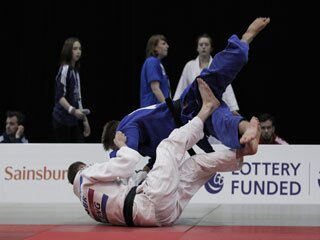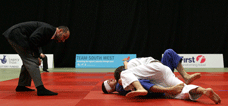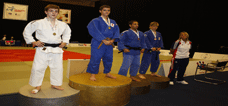
Judo is a sport that requires not only strength and agility but also determination to overthrow the opposition. There is no kicking or punching in judo, but tactical and careful movements.
The aim is to score ippon (the equivalent of a knockout punch) by throwing an opponent to the ground, pinning an opponent down or forcing a submission using an arm lock or choke.
Anyone can practice judo - there are different weight classes which means there are no size restrictions and it is open to both sexes.
Did you know...?
Judo is Japanese for "gentle way" and refers to the aim of turning an opponent's strength to your own advantage.
Judo was first included in the 1964 Tokyo Olympics where only men competed. Women's judo was included as a full sport in 1992 Barcelona Olympics.
Judo is competed on tatami or mats, made of compressed foam and vinyl. They used to be made of straw and canvas.
The status and positioning of the Games is cemented in the BJA Competition Framework. It is classed as a major International event for competitors in this age group. The BJA and Home Countries' Performance Teams have been instrumental in agreeing the importance of the Games in their programmes and its structure. All four Home Countries have assisted in the format and modeling of the event e.g. weight categories, age bands, number of competitors agreeing it is the ultimate domestic event for young players in the country, with players selected on the basis of their standing with the national squads of their own home country. Four teams will be representing England, Northern Ireland, Scotland and Wales.



